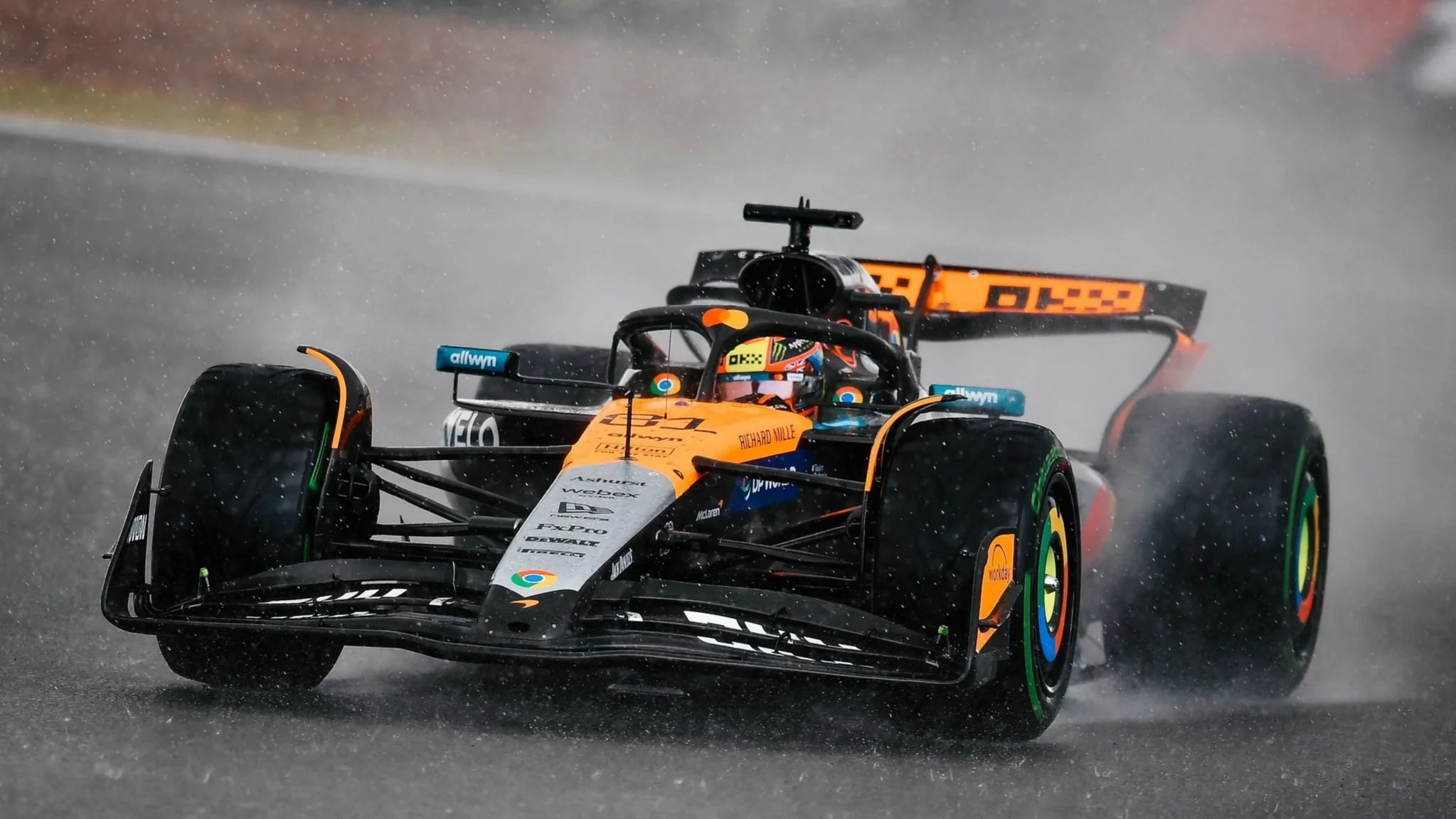Fair or excessive? a complete analysis of Oscar Piastri's sanction in the British GP
The British Grand Prix at Silverstone delivered one of the most exciting races of the season. It was a day packed with memorable moments, including Nico Hülkenberg's long-awaited first podium finish after 239 Formula 1 races and Lando Norris's first win on home soil. However, the race was also marked by the controversial penalty awarded to Oscar Piastri, which cost him a potential victory over his teammate.
During the final restart, Piastri, who was leading at the time, braked suddenly, forcing Max Verstappen who was right behind him to perform an evasive maneuver to avoid a collision. This action led the stewards to issue a 10-second penalty to the Australian driver, relegating him to second place and leaving Norris as the winner.
Photo: McLaren
The penalty sparked a wave of divided opinions. Many on social media, and even in the paddock, questioned whether the penalty was fair or, on the contrary, a biased decision favoring the British driver. Comparisons quickly emerged, especially with a similar incident at the Canadian Grand Prix between George Russell and Max Verstappen, in which no penalty was issued.
But a closer look at both situations reveals key differences. In Canada, the track conditions were optimal: dry weather, good visibility, and favorable temperatures. Russell applied 30 psi of brake pressure, arguing that he was trying to maintain brake and tire temperatures and maintain a distance from the safety car. The maneuver occurred with the safety car lights still on and Verstappen not directly behind the Briton, so it was not considered a dangerous action.
According to Article 55.5 of the International Sporting Code, “Drivers must not drive unnecessarily slowly or erratically in a manner likely to endanger others when the safety car is on the track.” In this case, Russell never braked abruptly, nor was his action considered to endanger others.
At Silverstone, on the other hand, the situation was completely different. The track was wet, visibility was poor, and the weather was unstable. In this more risky environment, Piastri braked with a force of 59.2 psi, going from 218 km/h to just 52 km/h in less than two seconds, just after the safety car switched off its lights and the race was released.
At this point, Article 55.15 of the FIA regulations is clear: "Once the safety car switches off its lights, drivers must maintain a steady pace and avoid aggressive acceleration or braking that puts others at risk." Piastri's maneuver was deemed erratic and dangerous, and Verstappen had to react quickly to avoid a crash. Even Hülkenberg, from a much further back position, stated in the cool-down room that several drivers had to avoid cars as a result of that braking.
Given this context, Piastri's penalty was well-imposed and justified. The debate now revolves around whether the penalty should have been 10 seconds or whether a 5-second penalty would suffice.Both maneuvers Russell's in Canada and Piastri's at Silverstone deserved sanctions, but were evaluated under different standards. And although the situations, although comparable, fall under different articles of the regulations due to the conditions and timing of their occurrence, it is clear that the FIA continues to raise doubts about the consistency of its decisions.





